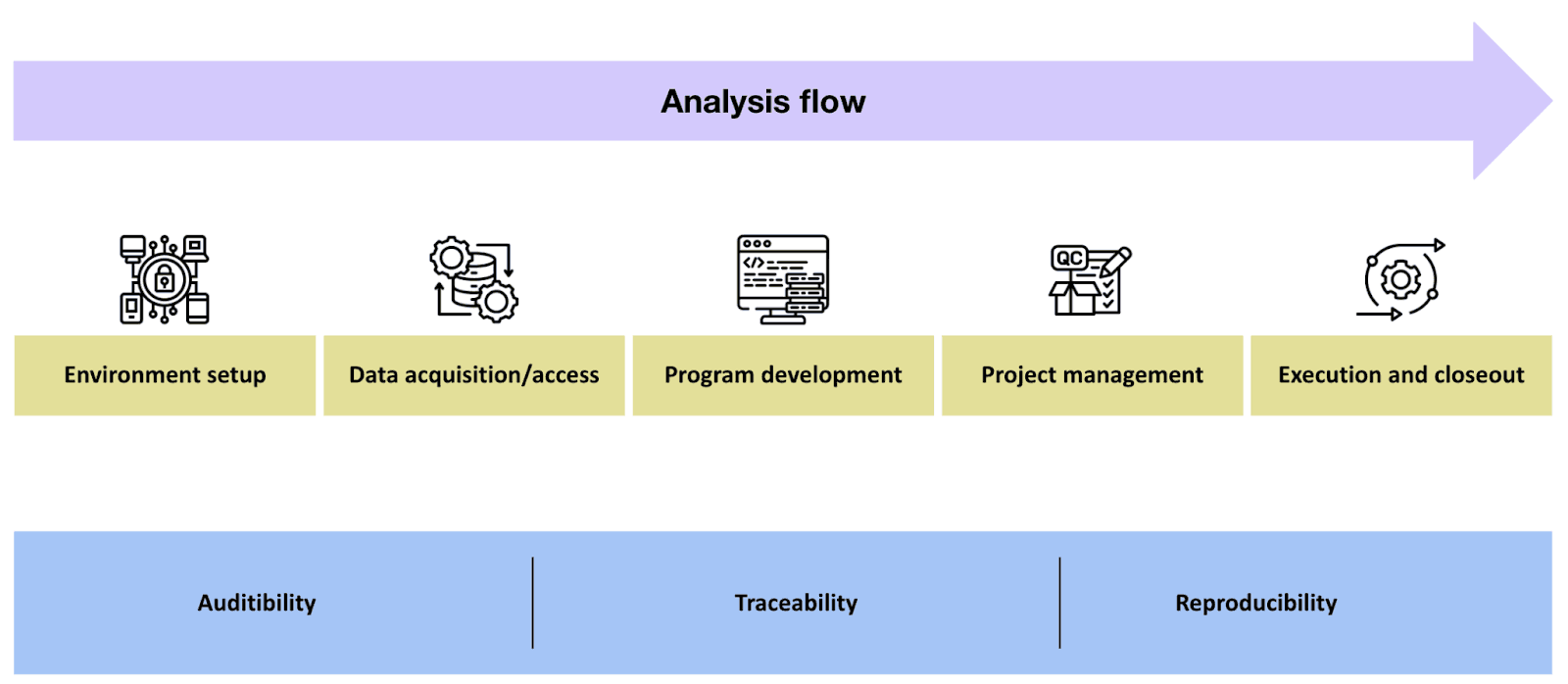Statistical Computing Environment (SCE)
What is a Statistical Computing Environment (SCE)?
A Statistical Computing Environment (SCE) is a centralized, integrated platform designed to streamline, automate, and ensure the rigor of statistical analysis processes for researchers and data scientists in the life sciences domain.
What are the benefits of a Statistical Computing Environment?
An SCE provides a foundation for maintaining the efficiency, traceability, and visibility of data and analyses.
- Support various programming languages like SAS, R, and Python, enabling the development and execution of statistical programs within a unified system.
- Key features include version control, collaborative editing, workflow automation, and data integration.
Enhance reproducibility and compliance with clinical research regulatory standards, facilitating accurate and efficient data management and analysis throughout the clinical trial lifecycle.
Stages of a Statistical Computing Environment

- Environment setup: Create platform infrastructure, develop, and validate production areas, HPC provisioning, and GxP compliance.
- Data acquisition and access: Connect to external data, including CDRs. Store temporary data for analyses and set up data permissioning, transformation, and viewing capabilities.
- Program development: Support for multiple languages and IDEs. Connect to version control, Git, and MDR to support analyses.
- Project management: Task ownership and status reporting, project management tool integration, and performance and process metrics.
- Execution and closeout: Build and execute workflow orchestration, artifact and document generation, output transmission via API, app publishing and visualization, and archiving.
Key Statistical Computing Environment features
- Data access/ingestion
- Ability to connect to external data sources
- Ability to ingest/store data
- Ability to perform data transformation to generate SDTM and ADaM datasets
- Metadata management
- Code/program management
- Support for multiple programming languages (SAS, R, Python) and development tools
- Integration with version control systems (Git)
- Automation/workflows/collaboration
- Ability to define a workflow for a reporting effort
- Ability to create a workflow as a template and tweak for new studies
- Ability to run/re-run the workflow
- Reproducibility and compliance
- Audit trails and activity logs
- Compliance with regulatory standards (GxP, 21 CFR Part 11, EudraLex Annex 11, WHO Annex 5, GDPR, and HIPAA)
- Ability to create snapshots of data, code, and environments to support lineage tracking
- Security and access control
- Multi-user environment with role-based access control
- Shared workspaces for collaborative projects
- Output management
- Ability to submit works in progress (WIPs) and outputs to reviewer for approval
- Ability to export TFLs and datasets
- Ability to push TFLs to publishing tools
- Project/workload management
- Task management tools to track progress and manage resources
- Ability to generate metrics and reports on data analysis efforts
- Visualization tools
- Ability to create visualizations based on programs
Benefits of an SCE:
- Improved productivity via standardization and automation
- Accelerated time to submissions and deliver faster
- Improved access to data, facilitating fast and high-quality decision-making
- Allow easy access and review by regulatory agency
- Reduction in costs
- Reduced learning curve due to a common working model
- Improved user experience and satisfaction
- Scalability
- Compliance with rules and regulations


